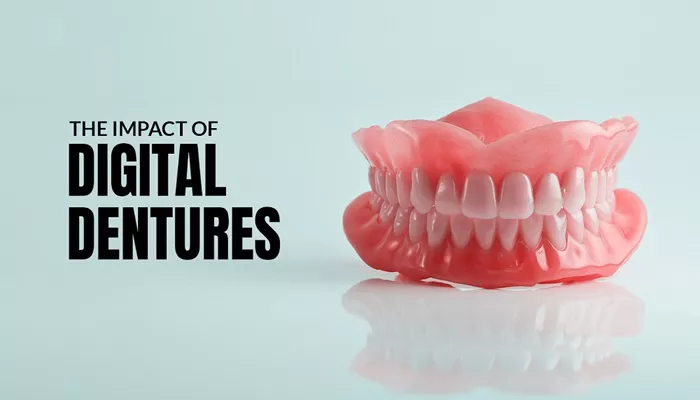Dentures are artificial teeth designed to replace missing teeth and restore the function and aesthetics of the mouth. For many patients, dentures significantly improve their quality of life by allowing them to eat, speak, and smile with confidence.
However, over time, dentures can undergo wear and tear, leading to a decrease in their effectiveness and comfort. This is where the concept of “reframing dentures” comes into play. This article aims to provide a detailed introduction to what it means to reframe dentures, exploring the reasons behind this procedure, the process involved, and its benefits from a dental professional’s perspective.
Understanding the Need for Reframing Dentures
Dentures, whether partial or complete, are subject to wear and tear over time. Daily use, along with exposure to food particles, acids, and other environmental factors, can gradually degrade the material and fit of the dentures. This can lead to a number of issues, including:
Poor Fit: Over time, the shape of the mouth can change due to bone loss or gum shrinkage. This can cause the dentures to become loose or uncomfortable.
Discomfort: A poorly fitting denture can cause discomfort, sore spots, and even pain in the mouth.
Difficulty in Eating and Speaking: A loose or improperly fitting denture can make it difficult to chew food properly and speak clearly.
Aesthetic Issues: Wear and tear can affect the appearance of the dentures, making them look older or less natural.
Reframing dentures is a procedure that addresses these issues by adjusting or replacing the framework that supports the artificial teeth. This can restore the fit, comfort, and functionality of the dentures, allowing patients to enjoy their benefits once again.
The Process of Reframing Dentures
Reframing dentures involves several steps, including assessment, planning, and the actual fabrication of the new framework. Here’s a detailed look at the process:
Initial Assessment: The first step is to assess the current state of the dentures and the patient’s mouth. This involves a thorough examination of the dentures for signs of wear and tear, as well as an evaluation of the patient’s oral health. The dentist will check for any areas of discomfort, sore spots, or looseness in the dentures.
Imaging and Planning: Next, the dentist may take impressions of the patient’s mouth to create a detailed model of the oral cavity. This model is used to plan the new framework for the dentures. The dentist will consider factors such as the patient’s bite, the shape of their mouth, and any specific needs or preferences they have regarding the appearance and function of the dentures.
Fabrication of the New Framework: Once the planning is complete, the dentist will proceed with the fabrication of the new framework. This involves creating a custom-made base that will support the artificial teeth. The base is typically made from a strong, durable material such as cobalt-chromium or titanium, which provides excellent support and stability.
Fitting and Adjustment: The new framework is then fitted to the patient’s mouth. The dentist will ensure that the fit is comfortable and secure, making any necessary adjustments to ensure proper alignment and function. This may involve trimming the base, adjusting the teeth, or adding acrylic to improve the fit and appearance.
Final Fitting and Review: After the initial fitting, the dentist will schedule a follow-up appointment to review the patient’s progress. During this appointment, the dentist will check the fit, comfort, and function of the reframed dentures, making any final adjustments as needed. The patient will also be given instructions on how to care for their new dentures, including proper cleaning and storage.
Benefits of Reframing Dentures
Reframing dentures offers a number of benefits for patients, including:
Improved Fit and Comfort: A properly framed denture will fit securely in the mouth, reducing discomfort and sore spots.
This can lead to improved comfort and a better overall experience with dentures.
Enhanced Functionality: A well-fitted denture will allow patients to eat and speak with ease, without the worry of their dentures slipping or falling out. This can significantly improve their quality of life and self-confidence.
Improved Aesthetics: Reframing dentures can also improve their appearance, making them look more natural and youthful. This can be particularly important for patients who are concerned about the way their dentures look or feel.
Longer Lifespan: By addressing wear and tear and restoring the fit of the dentures, reframing can extend their lifespan.
This can save patients money in the long run by reducing the need for frequent replacements or repairs.
Conclusion
Reframing dentures is a valuable procedure that can address a number of issues related to the fit, comfort, and functionality of artificial teeth. By working with a skilled and experienced dentist, patients can enjoy the benefits of well-fitted, comfortable, and functional dentures that restore their ability to eat, speak, and smile with confidence. If you’re experiencing issues with your current dentures, don’t hesitate to reach out to a dental professional to discuss the option of reframing. With the right care and attention, your dentures can continue to serve you well for many years to come.
Related topics:

